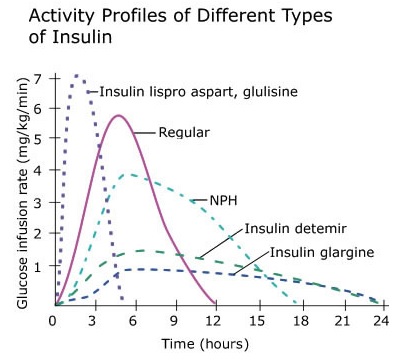Antihyperglycemic medications are used for glycemic control. Maintaining appropriate blood glucose levels in patients with hyperglycemia is important for minimizing the risk of acute symptoms, long-term complications, and mortality. There are many physiological causes of hyperglycemia, so multi-drug regimens may be required to control blood glucose levels.
Currently, there are 7 classes of oral antihyperglycemics.
Metformin is considered first line for treatment of type II diabetes mellitus. This oral medication is the only antihyperglycemic with evidence for decreasing premature mortality independent from glycemic control. Metformin acts as an insulin sensitizer by reducing hepatic glucose production. Metformin is contraindicated in patients with heart failure and a creatinine clearance <30 mL/min due to a risk of life-threatening lactic acidosis.
Sulfonylureas increase insulin secretion by stimulating pancreatic beta cells. Beta cells may become sensitized to these medications over time, eventually resulting in failure. Sulfonylureas may cause hypoglycemia, so dose initiation or titration should be done conservatively. Due to the risk of drug accumulation in patients with renal impairment, glyburide is not recommended, and glipizide/glimepiride should be used with caution. These drugs are associated with weight gain and an increased risk of cardiovascular death in patients with coronary artery disease.
SGLT-2 inhibitors promote glucose excretion by blocking its reabsorption in the kidney. In addition to lowering blood glucose, this class may also promote weight loss and cardiovascular benefits. The use of these medications is limited by risks, including genital infections, urinary tract infections, increased risk of bone fractures (canagliflozin), euglycemic ketoacidosis, and necrotizing fasciitis. Canagliflozin also has a black box warning for a two-fold increased risk of lower limb amputation.
TZDs activate nuclear transcription factor PPAR-γ, resulting in increased insulin sensitivity. Both drugs are contraindicated in patients with class III-IV heart failure due to black box warnings for increased risk of heart failure. Rosiglitazone has a second black box warning for increased risk of myocardial events. Other adverse effects that may limit utility in practice include weight gain, edema, and increased risk of fractures.
Gliptins stimulate insulin release and decrease hepatic glucose production. Mild adverse effects include headache and upper respiratory infections. Serious adverse effects include acute pancreatitis, urinary tract infections, extremity/back pain or osteoarthritis (with sitagliptin only). Gliptins do not have cardiovascular benefits and may increase risk of hospitalization for heart failure.
Meglitinides, similar to sulfonylureas, stimulate insulin secretion by pancreatic beta cells. This means patients may develop tolerance to these medications over time, as seen with sulfonylureas. Meglitinides, unlike sulfonylureas, have a short duration of action and primarily affect postprandial glucose level. This means patients should be instructed to take meglitinides before meals, up to three times per day. Repaglinide has similar glycated hemoglobin A1C lowering abilities and hypoglycemia risk to sulfonylureas while nateglinide is not as good at lowering A1C but provides a lower risk of hypoglycemia.
These drugs inhibit intestinal alpha glucosidase, preventing the breakdown of carbohydrates into simple sugars and ultimately resulting in lower postprandial blood glucose. Acarbose is generic and commonly used, however it is contraindicated in patients with the following: cirrhosis, colonic ulcers, intestinal disease or obstruction, inflammatory bowel disease, or diabetic ketoacidosis. The increased presence of carbohydrates within the intestines results in many of the GI side effects seen with this medication class.
Dylan Smith, Kelly Karpa


